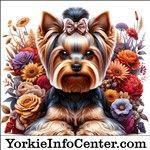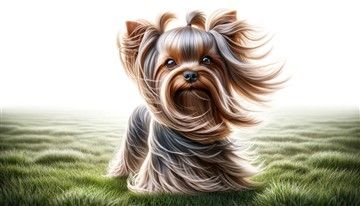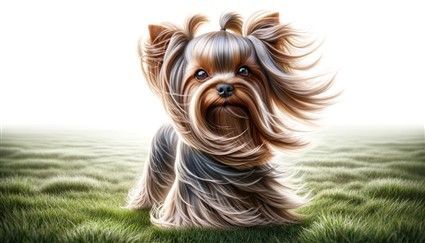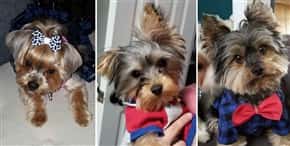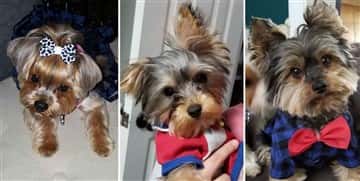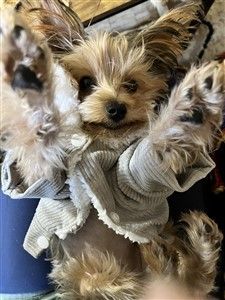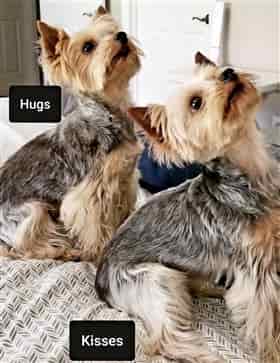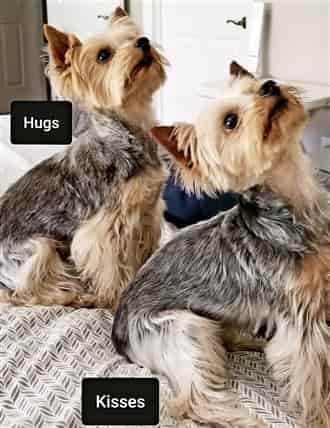Yorkshire Terrier Hair and Coat
Please note: YorkieInfoCenter is reader-supported, and some of the product suggestions on this page are affiliate links. As an Amazon Associate we earn from qualifying purchases. This is at no extra cost to you and helps us continue providing free, high-quality information.
Yorkshire Terrier Coat Elements
A Single Coat of Hair
One of the most distinctive features of the Yorkshire Terrier is its coat. Unlike many dog breeds that possess a double coat, comprising both an undercoat and an overcoat of hair or fur, the Yorkshire Terrier boasts a single layer of hair. This single-layer coat is very similar to human hair in texture and growth patterns, contributing to the breed's popularity among people with allergies, as it is considered to be more hypoallergenic than many other breeds.
The Difference Between Hair and Fur
Understanding the distinction between hair and fur in dogs is not just a matter of semantics; it reflects significant differences in texture, growth patterns, and grooming needs that can affect both the dog's health and the owner's lifestyle. Here are the three main differences between hair and fur:
- Growth Patterns and Length: A key difference between dog hair and fur lies in their growth: hair, like that of Yorkshire Terriers, grows continuously, allowing for longer lengths and varied styling, while fur has a set length before shedding, leading to distinct grooming needs.
- Renewal Cycle and Shedding: Hair has a slower renewal cycle than fur, involving growth, rest, and shedding phases, leading to less frequent shedding. This trait is beneficial for allergy sufferers or those aiming to reduce pet hair in their homes. Though this often puts breeds with hair into the hypoallergenic category, no breed is completely allergen-free.
- Texture and Density: The texture of hair is generally smoother and silkier compared to fur. This quality is due to the absence of the coarse guard hairs that are characteristic of fur. Additionally, hair is less densely packed on the skin, featuring fewer follicles per square inch. This lower density contributes to the sleek, refined appearance of hair-coated breeds and influences grooming techniques and tools that are most effective for their care.
Silky Coated Yorkshire Terriers vs Cotton Coats
Coat Color
Yorkshire Terrier puppies are initially black and tan, a color pattern that significantly changes as they mature. Though it is a slow process, generally by the two year mark and no later than the three year mark, the black and tan will transform to blue and tan (or gold). This fascinating change is due to their genetics, with the "blue" ranging from a dark steel (preferred in the show ring) to a lighter silver (common with pet Yorkies) and the "tan" presenting a deep, rich gold that intensifies at the tips.
#3 Protect the coat with a leave-in spray.
- Helps the coat repel dirt, debris, urine splashes, allergens, and irritants (such as lawn care chemicals)
- Creates a layer of protection on the hairs to protect from contact friction and environmental exposure including arid winter air and the UV rays of the sun in the summertime
- Locks in moisture and helps prevent dryness for both skin and coat
- Works as a detangler and helps prevent tangles
- As an added plus, it can keep a Yorkie smelling nice and clean
#4 Use the right combs and brushes.
Yorkshire Terrier Hair and Coat Issues
More Articles:
Yorkshire Terrier Allergies - Details of airborne, contact, and food allergies. Signs (some may surprise you) and steps for effective treatment, including home remedies.
